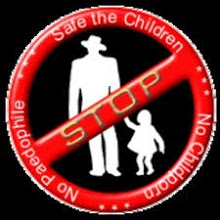This is a serious conversation that I won’t sensationalize or joke about. The mental health disorders known as paraphilias (commonly referred to as sexual deviancies or perversions) represent a disturbing level of dysfunction that has devastating consequences for victims. This Straight, No Chaser will provide an overview of these disorders as categorized by the Diagnostic and Statistical Manual of Mental Disorders (DSM).
First, here’s a working definition from the DSM: paraphilias involving recurrent fantasies, urges or behaviors of a sexual nature that center on children, non-humans (animals, objects or materials), or harming others or one’s self. That definition isn’t especially difficult to understand, but what is more difficult to appreciate is these deviants (and often predators) suffer from mental illness and aren’t just “bad people.” What’s especially difficult for society to reconcile is when and if treatment is more appropriate than punishment.
Here’s a list of recognized sexual deviancy disorders, which will be individually discussed in future posts. It is important to note that some of these behaviors occur in the general population in certain circumstances (e.g., between consenting adults) and only are defined as mental disorders when the activity becomes a compulsion, interfering with normal function and/or behavior.

Exhibitionism: the compulsion to display one’s sexual organs to strangers. This compulsion increases until relieved by the act of exposure.

Fetishism: the habit of having sexual energies fixated on an object. Typical objects include garments such as shoes or underwear or may involve materials such as leather or rubber. The objects of fetishes often are required to achieve orgasm.

Frotteurism: the compulsion to rub ones self against strangers others in a sexual manner. This compulsion increases until relieved by the act.

Pedophilia: the act of a sexually mature adult fantasizing about or engaging in sexual behavior with children who haven’t achieved puberty.

Sadism and Masochism: the habit of engaging in sexual encounters where the focus is on causing (sadism) or receiving (masochism) physical and emotional pain, embarrassment and humiliation.

Transvestism: (aka cross-dressing) the habit of an otherwise “normal” heterosexual male having fantasies about and/or dressing in woman’s clothing, which is usually sexually arousing.

Voyeurism: the compulsion to fantasize about and/or actually spy on an unsuspecting person in the act of undressing (aka being a “peeping tom”) as part of a person’s sexual routine.
The DSM also includes a Not-Otherwise-Specified category of paraphilias, including such actions as a chronic preoccupation with making obscene telephone calls, relating sexually to only a part of another’s body, dead people, animals, feces and urine.
Sexual perversions generate many different emotions in victims and the general public. Perhaps Job One is to be conscious of your surroundings and the situations in which you place yourself. Although in most instances you can’t control the inclinations or prevent the actions of others, you can control the choices you make that increase or decrease your risk of becoming a victim of a sexual deviant.
Order your copy of Dr. Sterling’s new book Behind The Curtain: A Peek at Life from within the ER at jeffreysterlingbooks.com, iTunes, Amazon, Barnes and Nobles and wherever books are sold.
Thanks for liking and following Straight, No Chaser! This public service provides a sample of what http://www.SterlingMedicalAdvice.com (SMA) and 844-SMA-TALK offers. Please share our page with your friends on WordPress, like us on Facebook @ SterlingMedicalAdvice.com and follow us on Twitter at @asksterlingmd.
First, here’s a working definition from the DSM: paraphilias involving recurrent fantasies, urges or behaviors of a sexual nature that center on children, non-humans (animals, objects or materials), or harming others or one’s self. That definition isn’t especially difficult to understand, but what is more difficult to appreciate is these deviants (and often predators) suffer from mental illness and aren’t just “bad people.” What’s especially difficult for society to reconcile is when and if treatment is more appropriate than punishment.
Here’s a list of recognized sexual deviancy disorders, which will be individually discussed in future posts. It is important to note that some of these behaviors occur in the general population in certain circumstances (e.g., between consenting adults) and only are defined as mental disorders when the activity becomes a compulsion, interfering with normal function and/or behavior.

Exhibitionism: the compulsion to display one’s sexual organs to strangers. This compulsion increases until relieved by the act of exposure.

Fetishism: the habit of having sexual energies fixated on an object. Typical objects include garments such as shoes or underwear or may involve materials such as leather or rubber. The objects of fetishes often are required to achieve orgasm.

Frotteurism: the compulsion to rub ones self against strangers others in a sexual manner. This compulsion increases until relieved by the act.

Pedophilia: the act of a sexually mature adult fantasizing about or engaging in sexual behavior with children who haven’t achieved puberty.

Sadism and Masochism: the habit of engaging in sexual encounters where the focus is on causing (sadism) or receiving (masochism) physical and emotional pain, embarrassment and humiliation.

Transvestism: (aka cross-dressing) the habit of an otherwise “normal” heterosexual male having fantasies about and/or dressing in woman’s clothing, which is usually sexually arousing.

Voyeurism: the compulsion to fantasize about and/or actually spy on an unsuspecting person in the act of undressing (aka being a “peeping tom”) as part of a person’s sexual routine.
The DSM also includes a Not-Otherwise-Specified category of paraphilias, including such actions as a chronic preoccupation with making obscene telephone calls, relating sexually to only a part of another’s body, dead people, animals, feces and urine.
Sexual perversions generate many different emotions in victims and the general public. Perhaps Job One is to be conscious of your surroundings and the situations in which you place yourself. Although in most instances you can’t control the inclinations or prevent the actions of others, you can control the choices you make that increase or decrease your risk of becoming a victim of a sexual deviant.
Order your copy of Dr. Sterling’s new book Behind The Curtain: A Peek at Life from within the ER at jeffreysterlingbooks.com, iTunes, Amazon, Barnes and Nobles and wherever books are sold.
Thanks for liking and following Straight, No Chaser! This public service provides a sample of what http://www.SterlingMedicalAdvice.com (SMA) and 844-SMA-TALK offers. Please share our page with your friends on WordPress, like us on Facebook @ SterlingMedicalAdvice.com and follow us on Twitter at @asksterlingmd.


